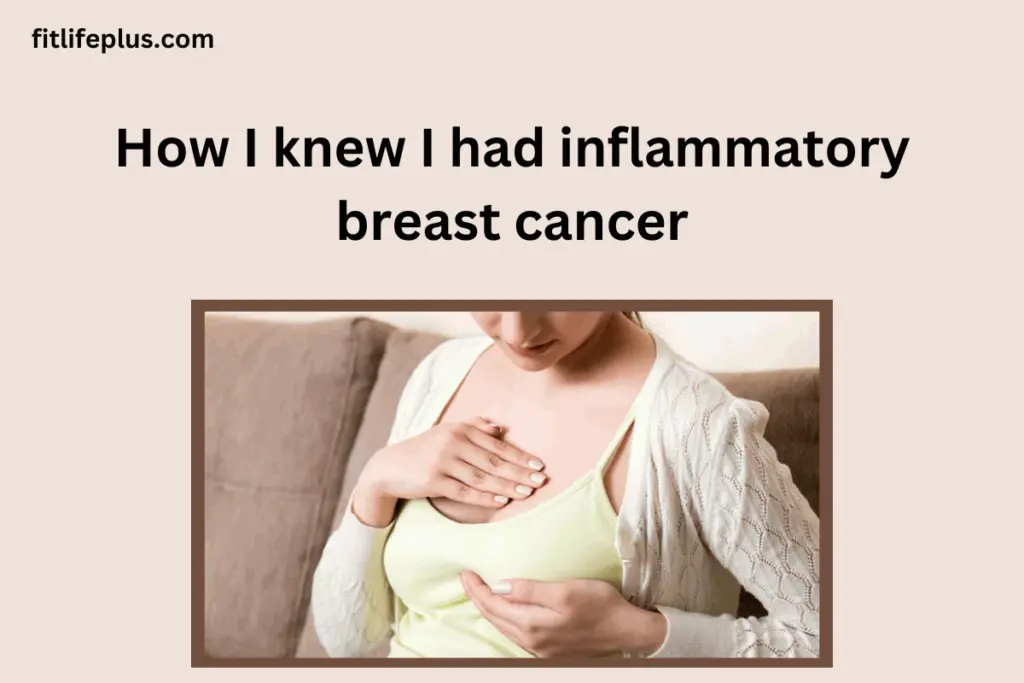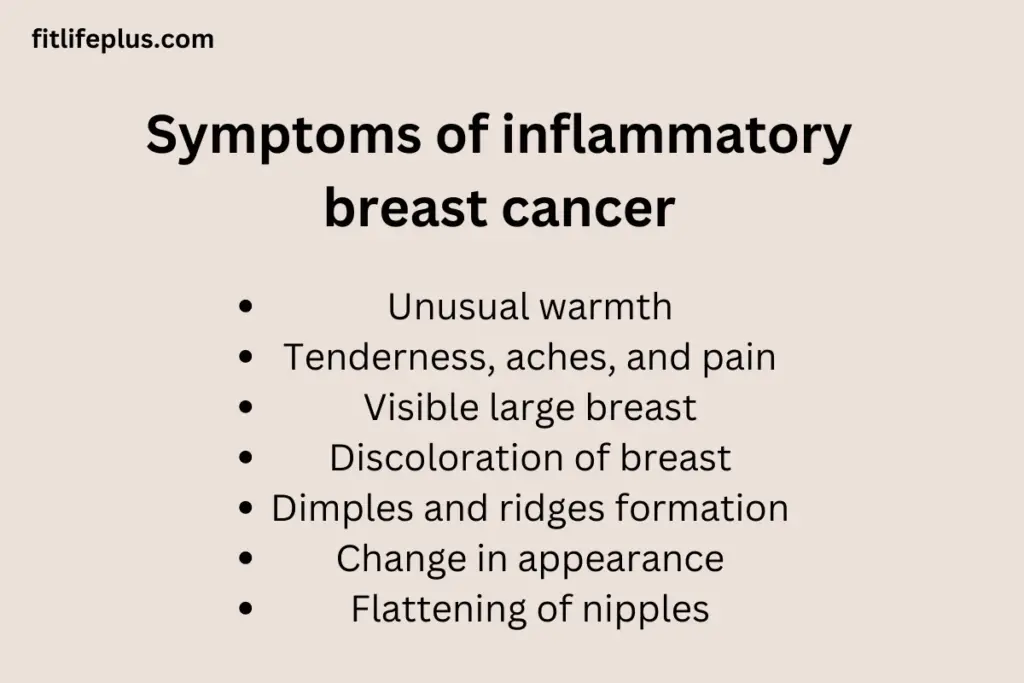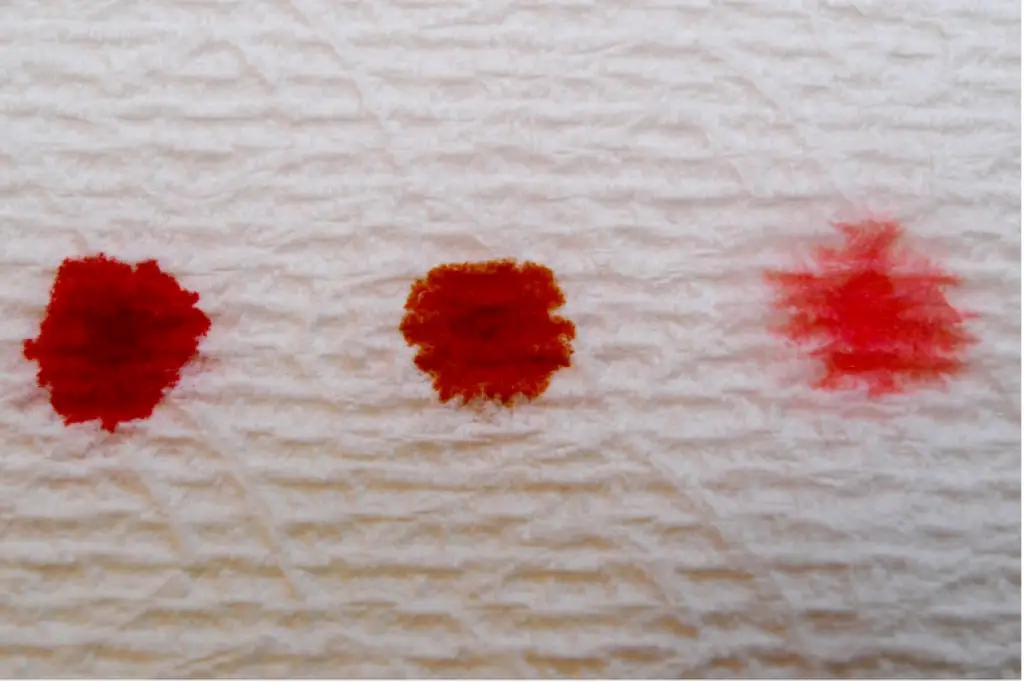Unfortunately, every 5 out of 10 women are at risk of getting breast cancer, and out of which only 45% of women survive. A few decades back, it was tough to detect breast cancer, but you can do it quickly with the advancement in tech-efficient diagnostic techniques.
Many states in the UK and US have diagnostic centers and are offering free of cost mammograms.
Breast cancer symptoms are different in every woman. One may feel a lot of them, while others may not experience a single one. But it’s asymptomatic in most cases. Breast redness, swelling, and irritation are the most common symptoms.
In this article, you will find the detailed answer to “How I knew I had inflammatory breast cancer.”
What is inflammatory breast cancer?

Inflammatory breast cancer is a type of invasive ductal carcinoma. These cancer cells cause lymph vessel blockage that results in swelling and redness. Inflammatory breast cancer is unlike common breast cancer and has complications and treatment procedures.
According to the imaging specialist, inflammatory breast cancer is rare in 2% of every 10% of women. However, it is commonly found in obese women.
Symptoms

Inflammatory breast cancer doesn’t usually form a lump like other breast cancers. The other signs and symptoms of other inflammatory symptoms include:
- Unusual warmth on the affected breast
- Tenderness, aches, and pain
- Flattening and turning inward of the nipple
- Heaviness and large visible breast
- Dimples or ridges formed on the skin of the affected breast
- Discoloration of the breast that gives it a pink, red, and purple bruised skin
- Changes in the appearance of that specific breast with a time
- Increase the size of the lymph nodes under the arms, above and below the underarms.
These symptoms must have been present for around six months to diagnose inflammatory breast cancer.
Causes
Inflammatory breast cancer is invasive ductal carcinoma. Ductal carcinoma is cancer that forms from the cells surrounding the milk ducts. Unfortunately, cancer spreads beyond the milk ducts and affects the healthy tissues. There is no solid research to prove the cause behind these malignant cells.
Inflammatory breast cancer results from the cancerous cells’ blockage of lymph vessels. Lymph vessels are the hollow tubes in the lymphatic system that allows the fluid to drain out of the vessel. The blockage makes your breast swollen, red in color and inflamed. In maximum cases, the cancerous cells spread from the lymph vessels.
Once the cancer metastasizes, it affects other organs, and the treatment becomes complicated.
Diagnosis of inflammatory breast cancer
Here are the three common ways of diagnosis of inflammatory breast cancer:
Physical exam
In the case of inflammatory breast cancer, lumps are usually not formed, which makes its diagnosis even harder. In some cases, other health conditions like cancer can similarly impact your breast appearance.
Imaging
Momomgram uses low-energy X-rays to create a picture of the inside breast. It will allow the healthcare provider to look for the signs of breast cancer, like thick skin, lumps, or breast calcifications.
Breast ultrasounds
Breast ultrasounds help create inside pictures of the breast, lymph nodes, and nearby tissues. The ultrasound also allows the provider to see if the cancer in your breast is spreading to the nearby cells. But unfortunately, in many cases, the IBC and the breast infection look quite similar on the imaging.
Biopsy
A biopsy is the best way to diagnose Inflammatory breast cancer. The healthcare provider removes a tissue sample from your breast during a biopsy. The sample of the cells is also tested in the lab to see if it’s cancerous.
Biopsy results also help the health care provider discover the specific targeted therapies or drugs effective for treating cancer.
Differences in inflammatory breast cancer and typical breast cancer
There are many ways in which inflammatory breast cancer differs from the specific breast cancer. According to the women’s imaging specialist, inflammatory breast cancer cells are less common than regular breast cancer cells.
Here are some of the common symptoms that help in the differentiation of both breast cancer types.
Abnormal cancer cell growth
The inflammatory breast cancer cells can multiply 10 times faster than the regular breast cancer cells. Besides, chronic cases of inflammatory breast cancer prove to be fatal for many patients.
It is usually diagnosed at an advanced stage.
The inflammatory breast cancer diagnosis is quite challenging, making its diagnosis possible at an advanced stage. Around 95% of the cases it is diagnosed in an advanced stage.
Is Asymptomatic
One of the most significant difficulties in diagnosing breast cancer is the absence of prominent symptoms. There is o formation of breast lumps makes inflammatory breast cancer more challenging.
Common in black women as compared to the white one
Inflammatory breast cancer is commonly found in dusky women as compared to white. However, it’s more common in women aged younger than 40 years.
Inflammatory breast cancer can be mistaken for the skin infection
According to the National Cancer Institute, inflammatory breast cancer is around 1 to 5% of all breast cancers. It is often mistaken as a breast infection, mastitis, or skin infection like cellulitis. The symptoms like swelling, pain, and skin redness are similar in both cases.
Inflammatory breast cancer is also linked with the thickening of the skin, which results in a bumpy appearance like an orange peel. Generally, a primary care provider prescribes medicines for the symptoms mentioned above. But the main problems arise when its signs don’t disappear.
When the symptoms worsen, people must follow up with their doctor. There are maximum chances of treatment when the inflammatory breast cancer is caught on time, but when left untreated, it can spread beyond the breast.
Treatment
Inflammatory breast cancer treatments use a combination of methods like surgery, radiation, and chemotherapies.
Chemotherapy
Chemotherapy for breast cancer involves using drugs to kill the cancerous cells. You can receive the chemo through the vein or as a pill. Chemotherapy shrinks the cancer cells so they can be easily removed through surgery.
In some cases, you will have to receive chemo after surgery to destroy the cells that remain after surgery.
Radiation therapy
This therapy uses a machine to direct the energy toward the cancer cells and destroy them. After surgery, you may receive radiation to kill any remaining cancerous cells after surgery.
Surgery
The surgery removes the entire infected breast and the surrounding lymph nodes. Conservative treatments that only remove the infected part are ineffective in Inflammatory breast cancer. The cancer spread quite fastly.
You will receive the treatment based on the cancer cells’ characteristics. Your doctor may recommend you receive treatment like immunotherapy, hormone therapy, or targeted therapy.
Target therapy
The targeted therapy produces weakness in the cancer cells. Then it targets that weakness to destroy the cancer cells. For example, The HER2 protein in the cancer cells helps IBC grow and spread. The targeted therapy destroys that specific protein and makes it even harder for the cancer cells to grow or spread.
Immunotherapy
Immunotherapy helps the immune system of the body to identify cancer cells and fight against them. According to the studies, some immunotherapy types improve the effectiveness of the IBC and other treatments like chemotherapy. But still, more research is needed.
Hormone therapy
Some cancer cell types have hormone receptors that cause cancer to grow in the presence of the progesterone and estrogen hormone. If your cancer cell has these receptors, your healthcare provider may prescribe hormone therapy to block these hormones.
FAQ’S
How did I know I had inflammatory breast cancer?
The breast core biopsy, breast imaging, and skin punch biopsy confirm the diagnosis of inflammatory breast cancer. In the skin punch biopsy and the breast biopsy, your doctor will take a small sample of your breast skin or breast tissue.
Does inflammatory breast cancer start with pain?
Inflammatory breast cancer is a little challenging to catch as it doesn’t show any lump formation or other common forms like breast cancer. The signs of the IBC are related to inflammation, pain, swelling, and redness in the affected breast.
What is the period of IBC?
The classic inflammatory breast cancer symptoms develop quickly in 3 months or less. The most common symptoms include red skin, swollen breasts, and nipple inversion.
Where does the inflammatory breast cancer rash start?
Some women describe the rash’s start as relatively minor, resembling a bug bite. Inflammatory breast cancer involves the whole breast within a short period.
Conclusion
Among the various types of cancers, inflammatory breast cancer is known as the aggressive cancer type. However, it’s not very common. According to the research, inflammatory breast cancer is more prevalent in black women than white ones. Besides, different risk factors can also trigger cancer development and growth.
Then “how I knew I had inflammatory breast cancer?”
Diagnosing has become relatively easy with advancements in PET scans, mammograms, and breast biopsies. If you feel a lump in your breast area, it’s advised to consult a physician immediately. They will further help you with your diagnosis. Keep an eye on your health.



